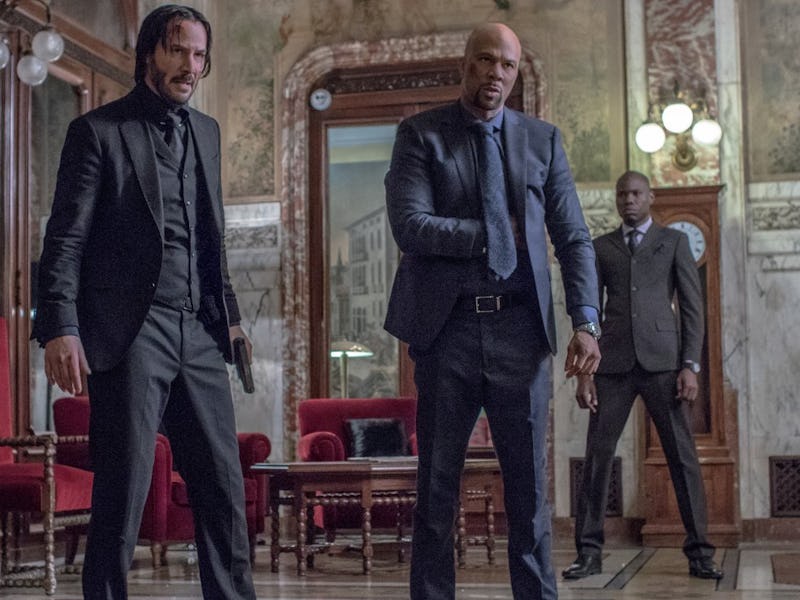The Blood Oath Marker Is the Mysterious Key to 'John Wick 2'
'John Wick' screenwriter Derek Kolstad breaks down the origins of the Marker, the inciting incident of 'Chapter 2.'

Screenwriter Derek Kolstad created the basic foundations of the John Wick universe in the original 2014 film, but didn’t necessarily think he’d ever have to expand on it. But the first flick was a surprise hit, so he had to go back to work, writing new adventures for Keanu Reeves’s slick hitman with a heart.
The impetus for the action in the first film was the murder of Wick’s beloved dog. This time around, he’s called back into action by a former colleague to whom he owes a favor, codified by an underground blood oath Marker.
Spoilers for John Wick: Chapter 2 from here on out
After settling the score with the Tarasov crime family in the extended prologue, Wick returns home … only to get a visit from Italian crime lord and fellow assassin, Santino D’Antonio (Riccardo Scamarcio). D’Antonio enlists Wick to knock off his sister Gianna. It’s harsh, but the only way he can take her seat at the shadowy High Table, which is kind of like the assassins’ senate.
Since Wick just got finished kicking every single Tarasov goon’s ass, he wants out of the assassin’s life. But D’Antonio drops a bomb: Wick is obligated to do this favor because the Italian is in possession of a Marker, a medallion that signifies a blood oath between assassins.
“The Marker mostly came from just wanting to do a movie that had a blood oath,” Kolstad told Inverse. “In Westerns like Pale Rider or Once Upon a Time in the West, there’s always unspoken moments where a guy walks into town, he brings out a coin with his carved initials on it or something, and he asks for a favor owed him. It was also our little nod to a deal with the devil scenario.”
John is obligated to accept the blood oath because D’Antonio helped Wick leave the criminal world so he could marry his late wife Helen. The circumstances surrounding just how Wick got out of the game are left mysterious. But in true Wick fashion, it’s given an intriguing name: the Night of the Impossible Task.
“We talked about showing the Night of the Impossible Task, but then we realized that phrase was more than enough,” Kolstad said. “We didn’t want to go back and see it because it was always bigger and better in your imagination.” That kind of open-ended avenue into continuing the John Wick story is what led to the Marker and D’Antonio. “To bring in the guy who actually helped John with the Impossible Task, and you don’t actually know how he did it, spoke volumes to the weight of that blood oath.”
That basic mystery also allowed Kolstad to not only weave it into Wick’s motivation but into the broader ramifications of the Marker as a whole. It’s what Kolstad referred to as the “onion layers” of the John Wick universe.
Santino confronts Wick at his house.
“The Continental and the High Table manage these blood oaths, so it wasn’t just a narrative thing of one character giving another their word,” Kolstad said. “Instead, it was like you gave someone your word in front of a shady underworld notary. When it’s done you have your physical blood being shed to mark it with people like Winston [Ian McShane] signing off on it.”
Those details give the unspoken rule of the Markers a paper trail and provide a kind of litigious nature to the assassin hierarchy. It also gives Chapter 2 its dramatic thrust. Wick refuses the Marker because he wants out of the business. D’Antonio yields to Wick’s decision, and then promptly destroys his house with a grenade launcher. Winston, the owner of the Continental hotel in New York, warns John that if he refuses to accept the marker, it’ll cost him his life. John reluctantly accepts the mission to kill Gianna in Rome, and Chapter 2 gets under way. But it all goes back to that blood oath.